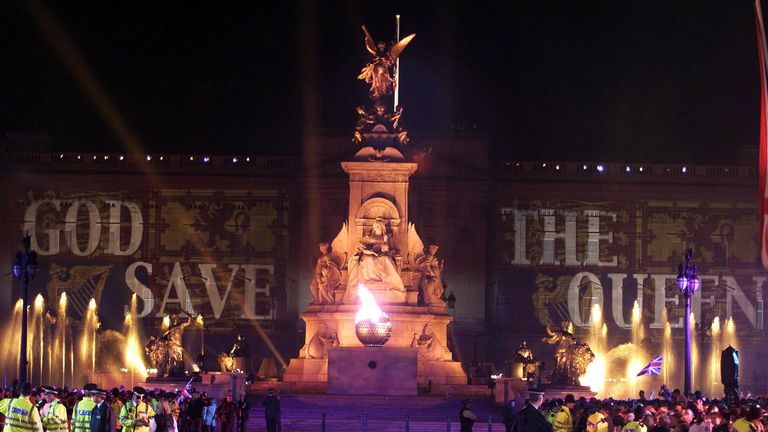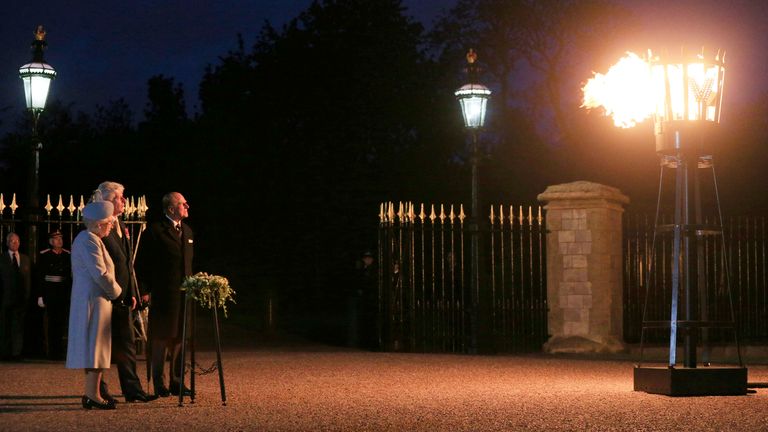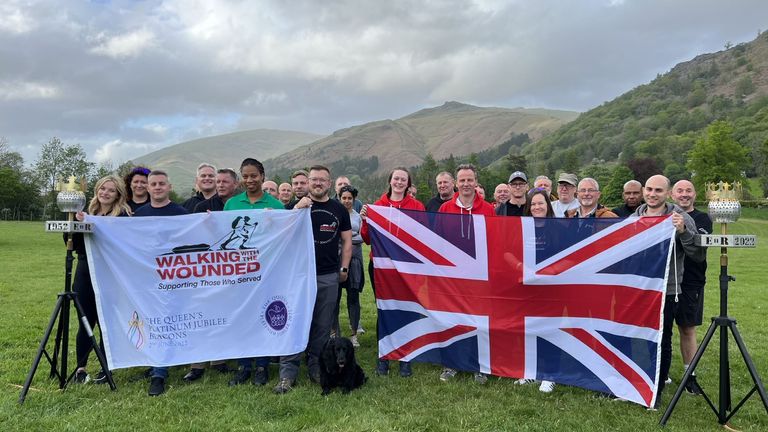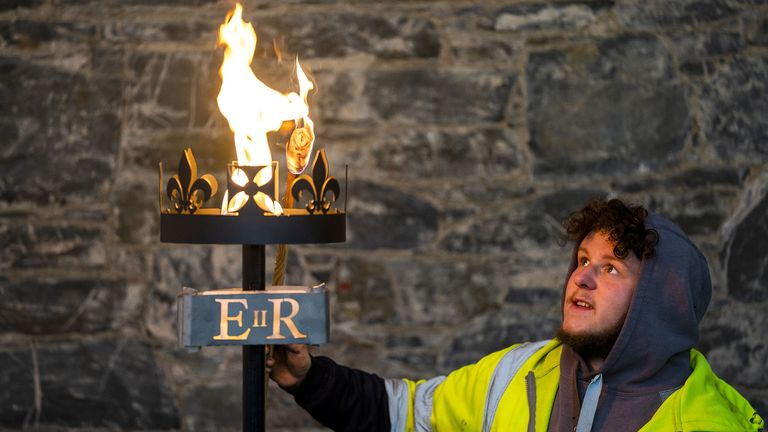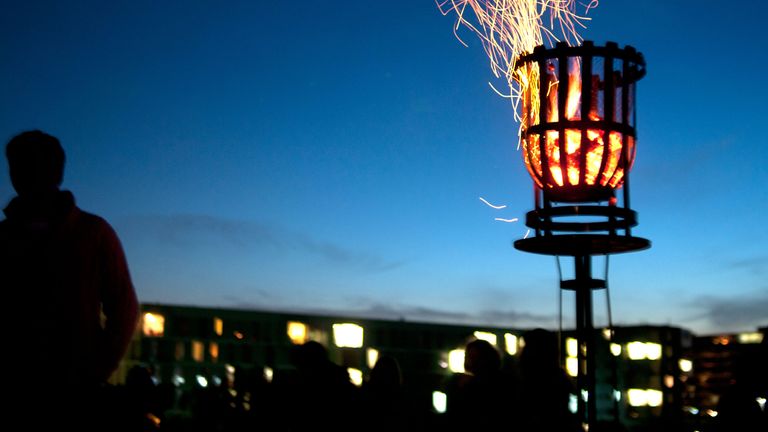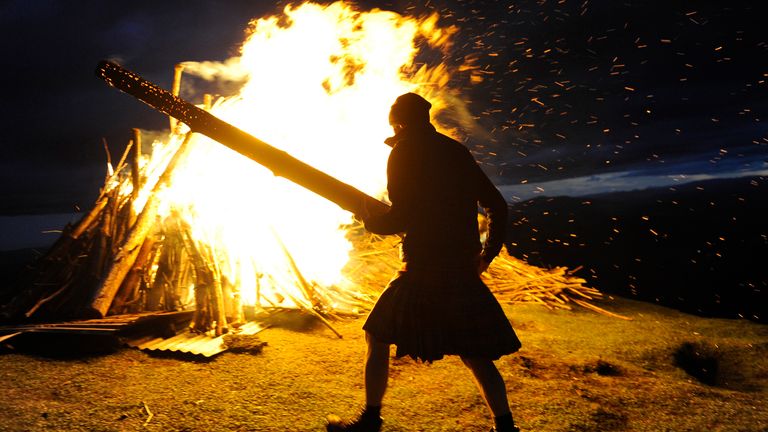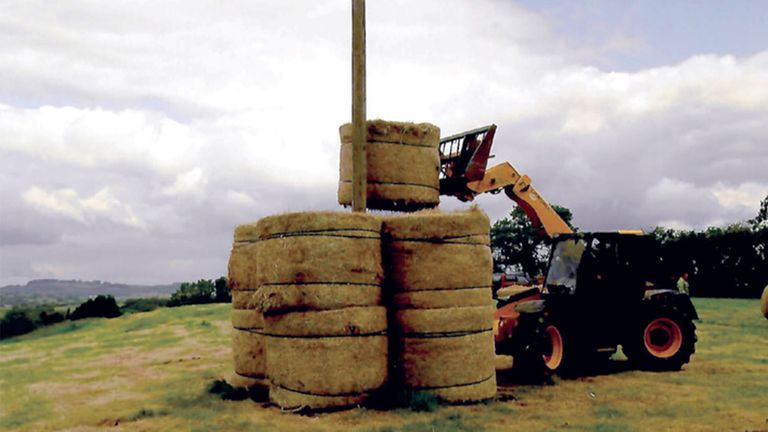[ad_1]
On Thursday evening more than 2,000 beacons are being lit in unison across the UK and the Commonwealth to mark the Queen’s Jubilee.
As part of the four-day celebrations, beacons will be lit in towns, villages and capital cities at the same time as a principal “Tree of Trees” lights up the sky outside Buckingham Palace.
Members of the Royal Family will attend the principal lighting ceremony in London, where Grammy-winner Gregory Porter will be the “principal singer”.
Why do we light beacons?
The UK has a long tradition of lighting beacons to mark Royal Jubilees, weddings and coronations.
In 1897, they were lit to celebrate Queen Victoria’s Diamond Jubilee, while the Queen has had them for her Silver, Gold and Diamond Jubilees in 1977, 2002 and 2012, as well as her 90th birthday in 2016.
Hundreds of years ago, beacon chains were used as communication and navigation tools, but have since become a symbol of togetherness at key moments of national significance.
Before the 2012 London Olympics, the Olympic Torch was carried around the UK before travelling to London to mark the start of the Games.
Where are they being lit on Thursday?
There are three types of beacon-lighting events happening throughout the country and the Commonwealth on Thursday.
Thousands of community beacons will be lit across towns and villages and at landmarks by local community and charity groups.
Fifty-four Commonwealth beacons will also be lit in each of the Commonwealth capital cities.
The principal beacon will be lit in the presence of the Royal Family outside Buckingham Palace.
Although traditionally the principal beacon would be set on fire, this year it is taking the form of a near-70ft light installation called the “Tree of Trees”.
Designed by Thomas Heatherwick, it celebrates the Royal Family’s commitment to environmental causes and the Queen’s Green Canopy tree-planting initiative.
The sculpture is made up of 80 steel branches holding 350 trees in aluminium pots marked with the Queen’s cypher.
What time is it all happening?
Proceedings get officially under way at 2pm when town criers will read a proclamation announcing the lighting of beacons later in the evening.
As darkness falls, beacon ceremonies will begin from around 9pm, with members of the Royal Family due to arrive at the principal lighting ceremony at 9.25pm.
Pipe bands are due to play Diu Regnare (Long to Reign) at 9.35pm.
This will be followed at 9.40pm by an official Bugle Call entitled Majesty written especially for the Jubilee and played by bugle and cornet players.
At exactly 9.45pm the beacons will be lit and communities will sing A Life Lived with Grace – the Song for the Commonwealth – which won a competition to be chosen as the official beacon song.
At Buckingham Palace it will be performed by the Jubilee’s principal singer Gregory Porter.
What beacons should I look out for?
Alongside the ceremony at Buckingham Palace, beacons are being lit in weird and wonderful places throughout the country.
Teams from the veteran charity Walking with the Wounded will light four torches atop of the highest peaks in each of the four nations – Scafell Pike in England; Mountain Snowdon in Wales; Ben Nevis in Scotland and Slieve Donard in Northern Ireland.
The charity’s chief executive Fergus Williams told Sky News they will be setting off between 3pm and 4pm to make sure they are at the top for the crucial moment.
“Clearly there will be a moment of reflection,” he told Kay Burley. “Seventy years of service by Her Majesty is phenomenal. We feel really honoured to have been asked to do this, so we’ll do it with great relish.”
There will be larger official beacon ceremonies in the capital cities of the four nations – at the Tower of London, Cardiff and Edinburgh Castles, and Titanic Belfast.
Dramatic beacon lighting events are also planned at Hadrian’s Wall and Cawfield Quarry in Northumberland, as well as on clifftops, beaches and inside sprawling country estates.
What types of beacons are there?
There are four different types of beacon being used as part of the Jubilee celebrations.
Gas-fuelled beacon
The burner heads for these new, specially designed beacons are shaped like a globe to represent the countries of the Commonwealth.
They are surrounded by a metal crown, are operated by gas cylinders and cost local authorities, community groups and charities around £500 each.
Beacon brazier with metal shield
These beacons are usually set atop of tall wooden or metal poles and are lit using solid fuel. Their metal shield is also shaped like a crown.
Communities may already have them from previous royal events.
Bonfire beacon
Beacons can also take the form of a traditional bonfire. These have to be lit at least 200ft away from all buildings, roads and railways and have permission from the landowner.
Official guidance suggests at least 12 marshals should monitor the flames, as well as the local fire brigade.
Strawman beacon
Similar to a normal bonfire but built with large straw bales in the shape of a stick man.
These are lit with paper and solid firelighters at six points around the strawman.
[ad_2]

